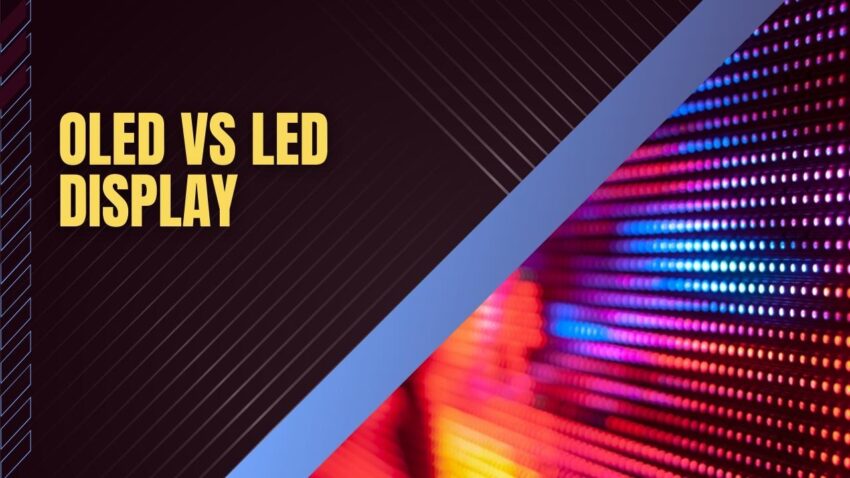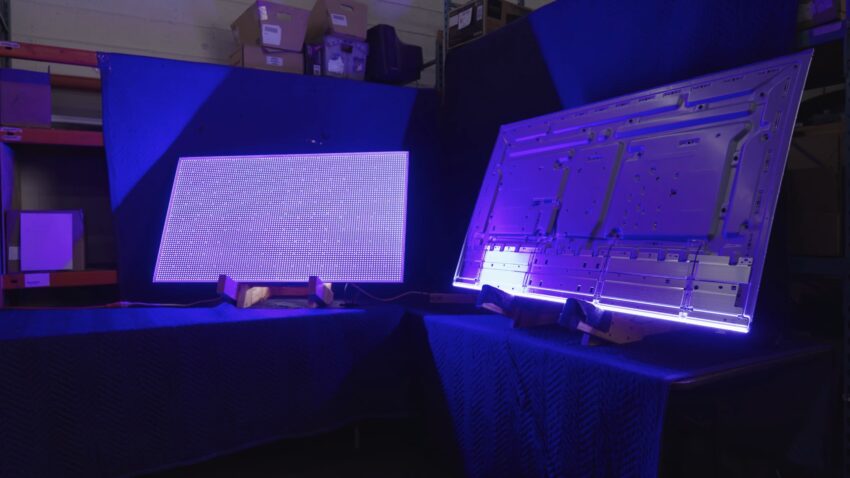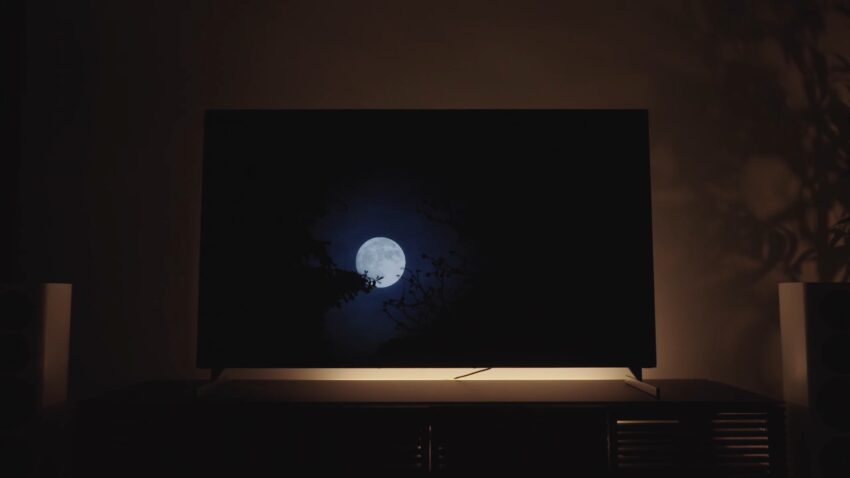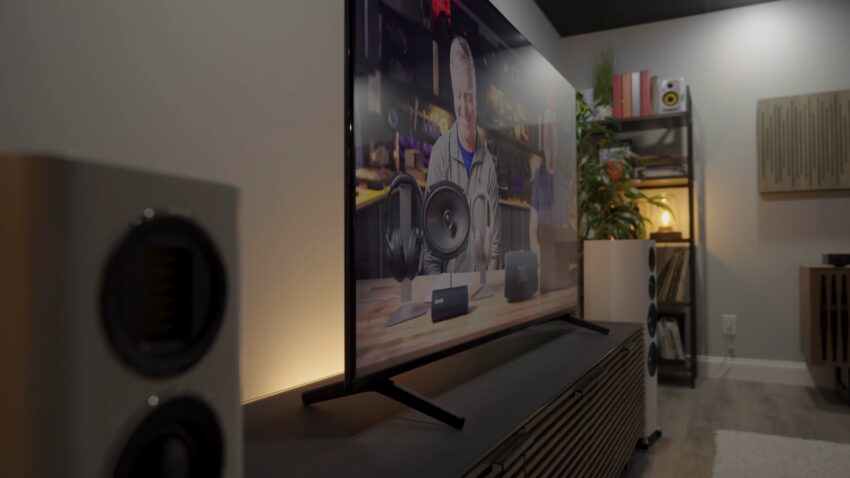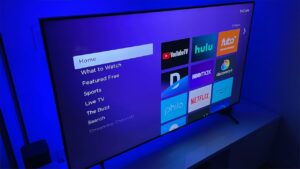In 2024, most of people are looking to buy the best 4K Ultra UHD TVs and there are two screen technologies to select from. The first one is OLED and the other is LED. These technologies are used to manufacture super-slim TV models and also provide clear, accurate 4K images. LED TVs make use of LCD display technology with LED backlight to illuminate the screen. There are three kinds of LED backlight illumination: edge-lit, direct-lit, and full array.
The LED backlight allows the TV to get very clear and accurate images even with bright surroundings. Many LED TVs use “quantum dots” to enhance brightness and color accuracy. OLED TVs do not need a backlight as each pixel is self-illuminating. The OLED TVs can produce absolute black and infinite contrast because every OLED pixel can switch off completely. The OLED TVs perform and deliver the best picture quality in the dark rooms. OLED TVs deliver broader viewing angles than LED TVs, which reduce brightness and color.
What is OLED TV?
An OLED TV is also known as an organic electroluminescent diode, where the emissive electroluminescent layer is an organic compound film that generates light in response to electrical current. The best TV you can buy for your budget is the OLED TV. They offer the most high-end result while maintaining a relative cost to their performance.
What do you mean by LED?
A light-emitting diode (LED) is a light source with a semiconductor that emits light as current passes through it. Electrons recombine with holes in the semiconductor, producing energy in the form of photons. The color of the light is calculated by the power that electrons need to reach the semiconductor’s bandgap.
What is a 4K TV?
The word “4K” refers to the resolution of nearly 4,000 horizontal pixel counts. A TV with 4K display resolution is a top-quality and high-definition (HD) video that is 4 times 1080p HD video resolution. There are two standard 4K TV recording configurations.
- The standard 4K quality preferred in the film and video production industry of Digital Cinema Initiatives is 4096×2160 pixels.
- The standard 4K resolution preferred for the television and monitors is 3840×2160 pixels.
10 key factors to consider before buying a TV (OLED vs LED)
1) Color Accuracy:
Winner: OLED TV
While LED TVs have improved significantly over the years, we have found that there is a loss of color brightness in LED-backlight LCD TVs. In OLED TVs each pixel includes red, green, and blue components that work together to deliver thousands of colors. Each pixel contains all the components necessary to deliver each color in the spectrum. Color content that is delivered from OLED technology produces more accurately than 4K LCD TVs. We assume that the chromaticity values for OLED will be more accurate than with 4K TV. From the OLED TVs, we’ve noticed that color content is better, darker, and more natural than 4K TVs (LCD TVs).
2) Sharpness Image Clarity:
Winner: LED 4K TV
The LED 4K TV is popular for its sharp images. They offer incredible picture clarity. How better they perform in rendering sharper images depends upon how well these TVs up-convert a 1080p signal to 4k resolution. This is an important factor due to the limited content available for 4K TVs. Few OEMs are better than others at this element of processing and offer the latest chipset.
3) Black Level/Contrast
Winner: OLED TV
OLED TV technology is the same as plasma technology. It independently illuminates pixel cells and offers deeper and darker colors and produce unlimited grayscale. The blacks that appear in the OLED TVs are perfect when compare to LED TVs. But LED TVs are improved in clarity but depend on the same LCD front panel with an LED backlight. While there have been remarkable improvements in black-level LED TV, they will never match OLED TVs in this region. There are 2 ways to improve contrast by producing deeper darker blacks and brighter whites. Producing darker blacks than OLEDs improves contrast and produces a clearer image.
4) Brightness/Peak white
Winner: LED
The brightness and peak white delivered by the LED TVs are more when compared to OLED. Because brighter LEDs can be produced in the future. The contrast of the OLEDs is limited due to the organic light-emitting diode size of pixels and organic structure material. Individual pixels are present in OLED TVs and there is no backlight available. So, in this case, LED is the true winner. If you want a bright TV for daytime watching then LED TVs are the best choice.
5) Overall Picture Quality
Winner: OLED 4K TV
If you think about the picture quality then OLED TVs are the best choice. Because the elements provided by the OLEDs are the best and are most important for the quality of the picture. The deepest blacks create the best contrast, quality of image, deeper picture, and color that occurs.
6) Side Angle Viewing Quality
Winner: OLED
OLED TV viewing angle is wider and it is good as the plasma TV. This is due to illumination from each pixel that is independently lit. The brightness comes closer to the screen panel than with the backlit LED TVs.
7) Screen uniformity
Winner: OLED
The major drawback of LED backlight TV and CCFl is screen uniformity. The screen is not uniformly distributed due to the absence of backlight. To resolve this we have to provide backlights instead of pixels on the front of the screen panel. Edge-lit LED TVs also face some problems of forming bars across the screen. But OLED TVs have excellent uniformity and enhances the beauty of the entire image.
8) Longevity or Lifespan
Winner: LED 4K TV
OLED 4K TV design is completely unproven and therefore doesn’t know about the lifespan. It wasn’t good. LED 4K TVs were equipped with long-lasting LED backlights and attempted-and-tested LCD front panels made up of twisted crystals. So this technology should last as long as 60,000 viewing hrs. The Led lights will fade over time, and the uniformity of the screen will improve after many years. And the LED backlights can’t be effectively replaced.
9) Price
Winner: LED
OLED TVs are very expensive when compare to LED TV. The OLED 4K TVs are still been sold at premium prices and their prices differ with sizes. When price is concerned, LED TV is the winner between OLED vs LED.
10) Value and Overall Performance
Winner: Pick it
There are two aspects while buying a 4K TV one is the price and the other is the performance of the TV. Here comes the technologies that are OLED and LED TVs. It is very difficult to differentiate OLED vs LED technologies as both as very good and performs well. The price of OLED TVs is more expensive when compared to LED TVs. If you go with the price wise LED TVs are better but the performance also counts, so if you need a high-performance TV OLED is the better choice.
OLED TVs are the best if you think about only the overall picture quality. The brightness and peak white delivered by the LED TVs are more when compared to OLED. LED TV viewing angle is wider and it is good as the plasma TV. This is due to illumination from each pixel that is independently lit. The LED 4K TV is popular for its sharp images. They offer incredible picture clarity.
FAQ
Are OLED TVs better in terms of black level and contrast?
OLED TVs have an advantage when it comes to black level and contrast. Each OLED pixel can turn off completely, producing absolute black and infinite contrast. LED TVs, while improved in black-level performance, still rely on LCD panels with LED backlighting and cannot match the pure blacks achieved by OLED technology.
Which display technology offers higher brightness and peak white levels?
LED TVs generally provide higher brightness and peak white levels compared to OLED TVs. LED TVs can achieve brighter output because they can produce brighter LEDs. OLEDs have limitations in brightness and contrast due to the size of organic light-emitting diodes and the organic material used. If you require a bright TV for daytime viewing, LED TVs are a better choice.
Which technology offers better overall picture quality?
OLED TVs are often considered to deliver the best overall picture quality. With their ability to achieve deep blacks, infinite contrast, and vibrant colors, OLEDs offer stunning visual experiences. The elements provided by OLED technology, such as deeper picture quality, contrast, and color accuracy, contribute to their superior picture quality.
Do OLED TVs have better side angle viewing quality?
Yes, OLED TVs provide better side-angle viewing quality compared to LED TVs. Due to their self-illuminating pixels, OLED TVs maintain image quality and brightness even when viewed from wider angles. LED TVs, especially those with backlights, may experience a reduction in brightness and color accuracy when viewed off-center.
Which display technology offers superior screen uniformity?
OLED TVs generally have excellent screen uniformity, enhancing the overall image quality. LED-backlit TVs, especially edge-lit models, may face challenges in achieving uniform screen illumination. OLEDs, with their pixel-level control of light emission, display better uniformity and contribute to a more immersive viewing experience.
What about the longevity or lifespan of OLED and LED TVs?
LED 4K TVs have a proven track record when it comes to lifespan and longevity. They feature long-lasting LED backlights and LCD panels made up of established technology. OLED 4K TV design is relatively new, and the exact lifespan is not yet determined. While OLED technology is expected to provide long-lasting performance, it is currently unproven. LED TVs can last for thousands of viewing hours without significant issues.
Conclusion:
When it’s OLED vs LED TVs, both have many features to offer and it’s a tough choice to pick one among these two. So, you could pick the one which best suits your needs.


